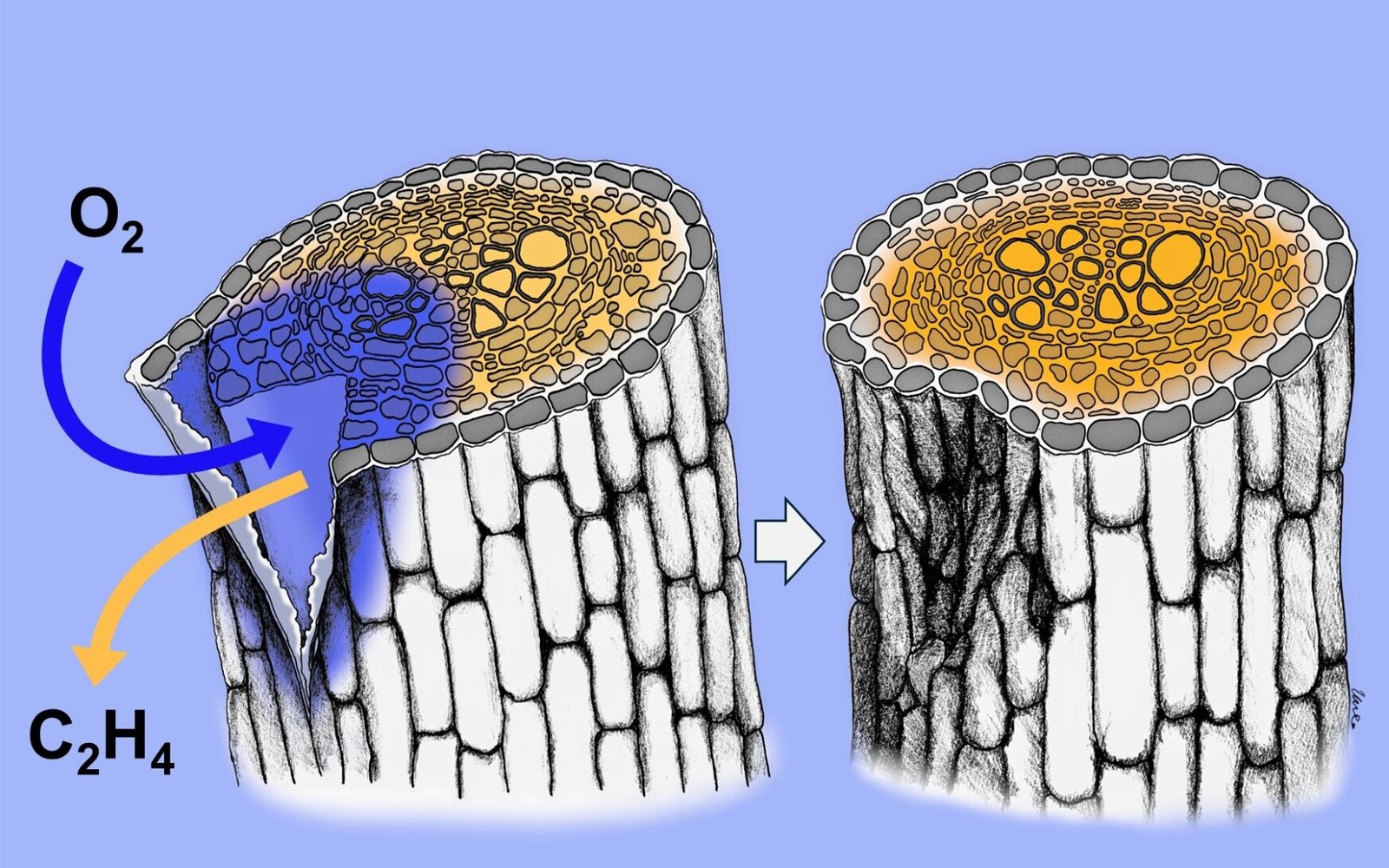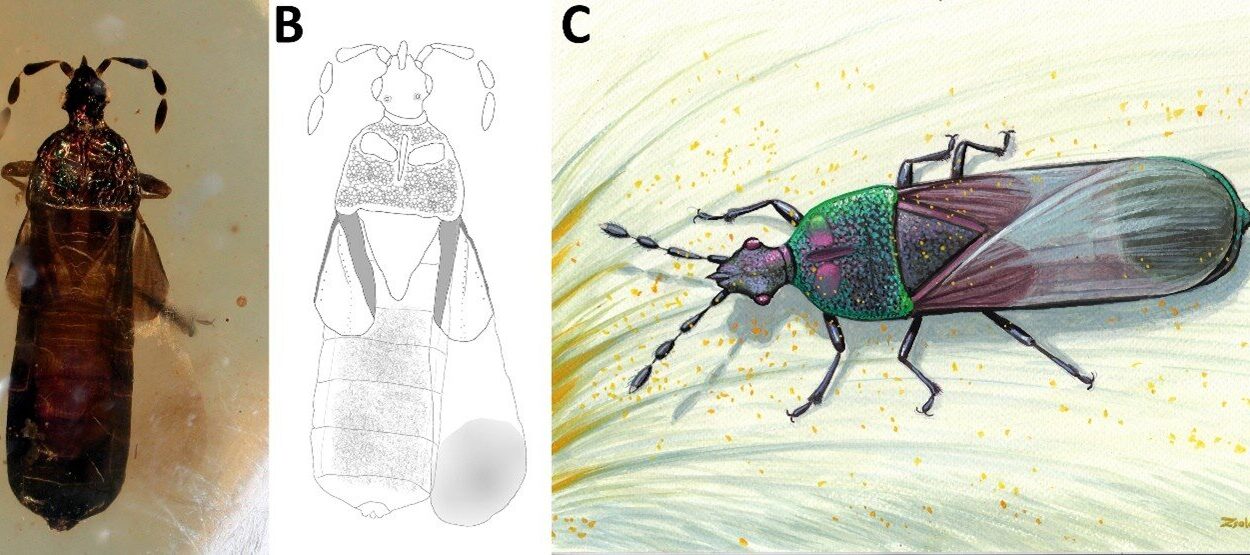When a tree’s bark is gashed, or a potato’s skin is scratched, the damage is more than cosmetic. That outer layer—the periderm—is a plant’s first line of defense, sealing in moisture and keeping out microbes. But how do plants know when that barrier has been breached? And how do they begin to heal?
Scientists at the University of Helsinki have discovered the secret signal that plants use to detect damage and trigger repair of their protective “skin.” The answer lies not in color, texture, or visible trauma—but in the movement of invisible gases. Their study, published in the prestigious journal Nature, reveals a surprisingly elegant mechanism: plants use changes in gas diffusion—specifically of ethylene and oxygen—to sense when their outer layer has been wounded, and when to start patching it up.
This groundbreaking research uncovers not just how plants mend themselves, but how we might one day help them do it better—potentially boosting crop resilience, reducing food spoilage, and improving agricultural sustainability in a warming world.
The Periderm: A Living Shield
The periderm, made of corky, tightly packed cells, acts as armor for plants. Found in potato skins, tree bark, and many fruits and vegetables, it protects internal tissues from dehydration, disease, and environmental stress. But unlike human skin, which bleeds or stings when cut, the periderm doesn’t scream when damaged.
That is, until now.
“We’ve discovered that when the periderm is intact, it creates a kind of sealed-off world,” said Professor Ari Pekka Mähönen, senior author of the study from the University of Helsinki’s Faculty of Biological and Environmental Sciences. “Inside, ethylene builds up, and oxygen is low—just part of normal plant function. But the moment the periderm is breached, the balance changes dramatically. Ethylene escapes, oxygen rushes in, and that shift sets off an internal alarm.”
This chemical shift doesn’t just reflect injury—it is the signal that starts regeneration.
A Breath of Fresh Air Triggers Healing
Ethylene is a gas that acts as a plant hormone, long known for its role in fruit ripening and stress responses. In this new study, researchers used the tiny mustard plant Arabidopsis thaliana, a favorite in plant science due to its fast growth and genetic accessibility, to trace how ethylene and oxygen interact in wounded tissues.
They found that under normal, undamaged conditions, the periderm acts almost like a vacuum seal. Ethylene builds up beneath it as a natural byproduct of growth. Oxygen, conversely, is scarce. But when the periderm is damaged—by a puncture, a scrape, or even a crack in the skin—the gases behave differently. Ethylene leaks out. Oxygen flows in. That sudden exchange acts like a chemical siren, telling the plant: repair needed now.
“Gas diffusion through a wound isn’t just a consequence of injury—it’s the signal that initiates healing,” explained Dr. Hiroyuki Iida, lead scientist of the project. “It’s a beautifully simple strategy. The plant doesn’t need a complex nervous system or a set of sensors. The gases do all the talking.”
Working with Professor Francesco Licausi from the University of Oxford, an expert in oxygen sensing in plants, the team confirmed oxygen’s critical role in the response, alongside ethylene. This double signal—low ethylene and high oxygen—triggers the plant to begin rebuilding the periderm, sealing the wound from the outside in.
From Scabs to Seals: When the Patch is Complete
Once the healing is underway, something even more remarkable happens. As the new barrier tissue reforms, it begins to restore the gas seal. Ethylene starts to accumulate again. Oxygen levels drop. And just like that, the plant knows the job is done.
“The signal doesn’t just start healing—it also knows when to stop,” Iida said. “That’s the genius of it. Plants don’t waste energy or overreact. The gas balance resets, and they return to normal growth.”
This subtle system—requiring no external input, no consciousness—operates in a silent but extraordinarily effective feedback loop. It’s the plant’s way of scabbing over a wound without needing skin cells or platelets. It’s self-repair, guided by air.
Crop Resilience, Storage, and the Future of Food
This discovery has implications far beyond the lab. Understanding how plants naturally trigger and complete periderm repair could lead to huge advances in agriculture, especially as global food systems face unprecedented stress from climate change and population growth.
Imagine a potato that seals its own scratches faster after harvest, reducing water loss and spoilage. Or carrots that resist rotting in storage because their skin heals before microbes can sneak in. Or fruit trees better able to defend against fungal infections after storm damage.
“Improving the healing capacity of barrier tissues could be a game-changer for food storage and plant resilience,” said Mähönen. “We’re talking about less waste, longer shelf life, and crops that survive better under tough conditions.”
It’s not science fiction—it’s science rooted in evolutionary biology. Plants have been using this system for millions of years. We’ve only just learned how to listen.
The Hidden Intelligence of Plants
This research also fits into a growing body of evidence suggesting that plants, though rooted and silent, are far more responsive and adaptable than we once believed. They don’t have brains or nerves—but they process information, communicate through chemistry, and respond with purpose to their environments.
The idea that a plant can “sense” damage and decide when to heal it may challenge our traditional ideas of intelligence. But the chemical choreography uncovered in this study is undeniably elegant—and effective.
And it all begins with a breath of air through a tear in the skin.
Reference: Hiroyuki Iida et al, Plants monitor the integrity of their barrier by sensing gas diffusion, Nature (2025). DOI: 10.1038/s41586-025-09223-4






